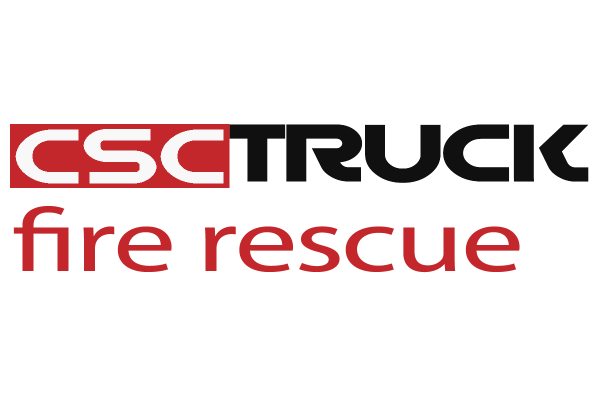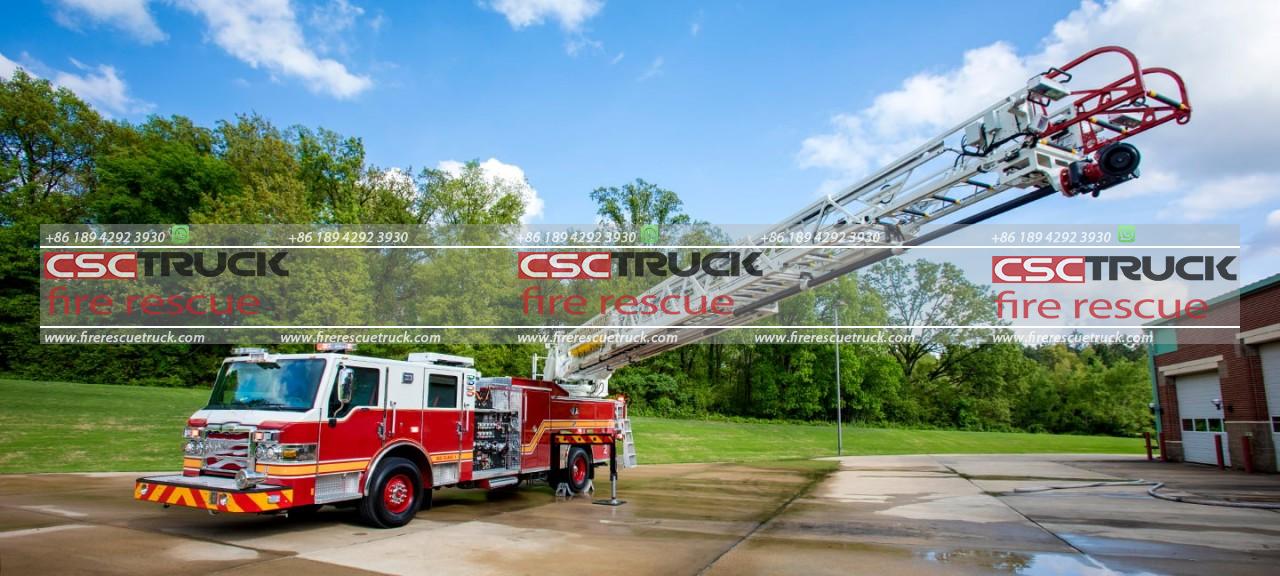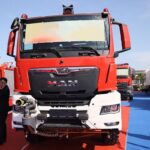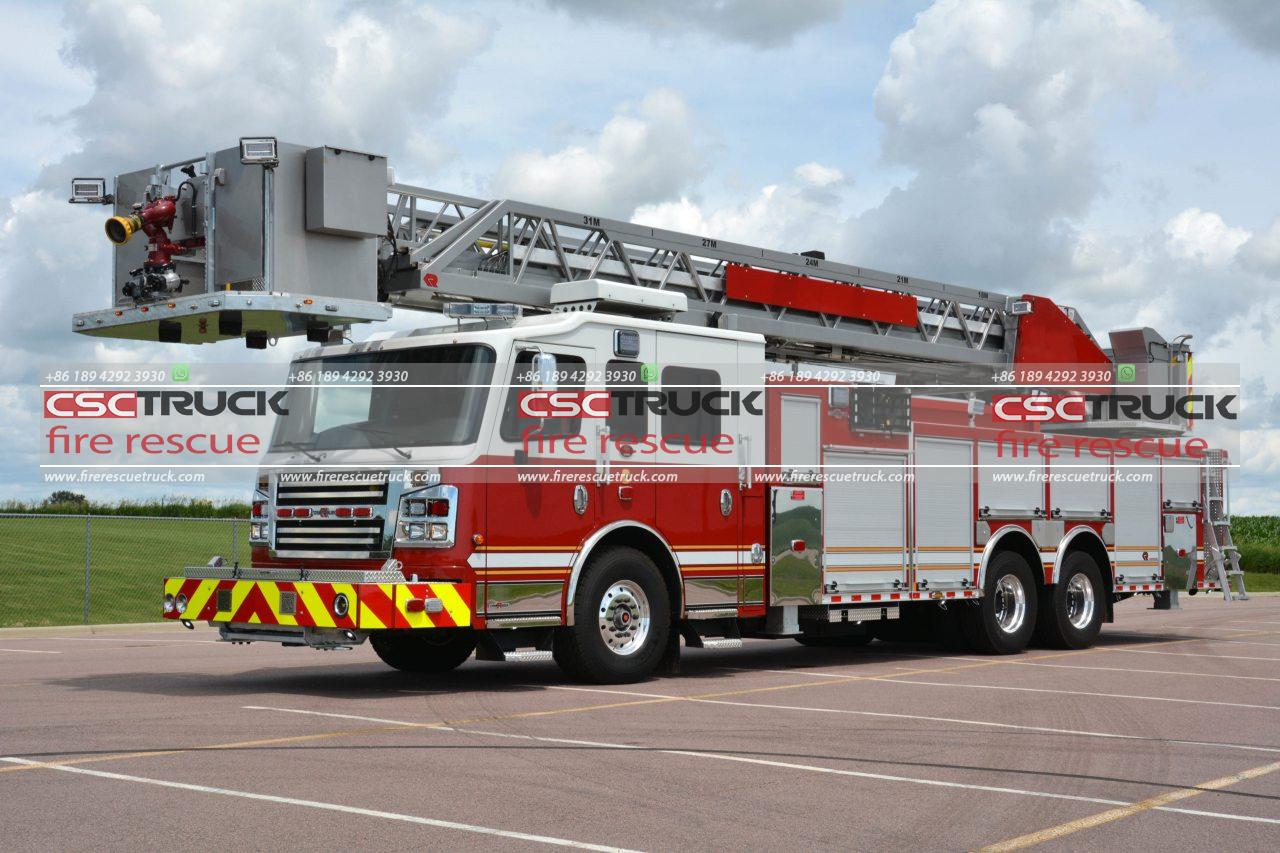A ladder fire truck, commonly referred to as an aerial ladder truck, is a specialized firefighting apparatus equipped with an extendable ladder to aid in firefighting and rescue operations at significant heights. These vehicles play a critical role in modern fire departments, providing access to upper floors of buildings, rooftops, and other elevated locations that ground-based firefighting equipment cannot reach. Ladder fire trucks are essential for fire suppression, search and rescue operations, and ventilation efforts in large structures.
Key Features of a Ladder Fire Truck
1. Extendable Aerial Ladder
The most defining characteristic of a ladder fire truck is its extendable aerial ladder, which can reach heights of up to 100 feet or more. The ladder is mounted on a turntable, allowing it to rotate 360 degrees, providing firefighters with flexibility when positioning the ladder for firefighting or rescue operations. The ladder may also be equipped with a waterway that allows firefighters to direct water streams from elevated positions.
2. Stabilization System
Due to the significant height and weight of the ladder, ladder fire trucks are equipped with outriggers—extendable legs that stabilize the vehicle when the ladder is in use. These stabilizers prevent the truck from tipping over, ensuring safety during operations.
3. Water Delivery System
Many ladder trucks are equipped with a built-in water delivery system that connects to a hydrant or onboard water tank. A fire nozzle, also known as a monitor, is often mounted at the tip of the ladder, allowing firefighters to spray water or foam from an elevated position. This is particularly useful for combating fires in high-rise buildings or large industrial fires.
4. Rescue and Safety Equipment
Ladder fire trucks carry a variety of rescue and safety equipment, including:
- Firefighter self-contained breathing apparatus (SCBA)
- Ropes and harnesses for high-angle rescues
- Hydraulic rescue tools (e.g., the “Jaws of Life”)
- Ventilation tools like chainsaws and axes
- Stretchers and medical supplies for emergency medical response
5. Crew Cab and Storage Compartments
A ladder fire truck typically has a spacious crew cab capable of transporting multiple firefighters to the scene. It also features multiple compartments for storing firefighting and rescue equipment, ensuring that firefighters have everything they need on hand for emergencies.
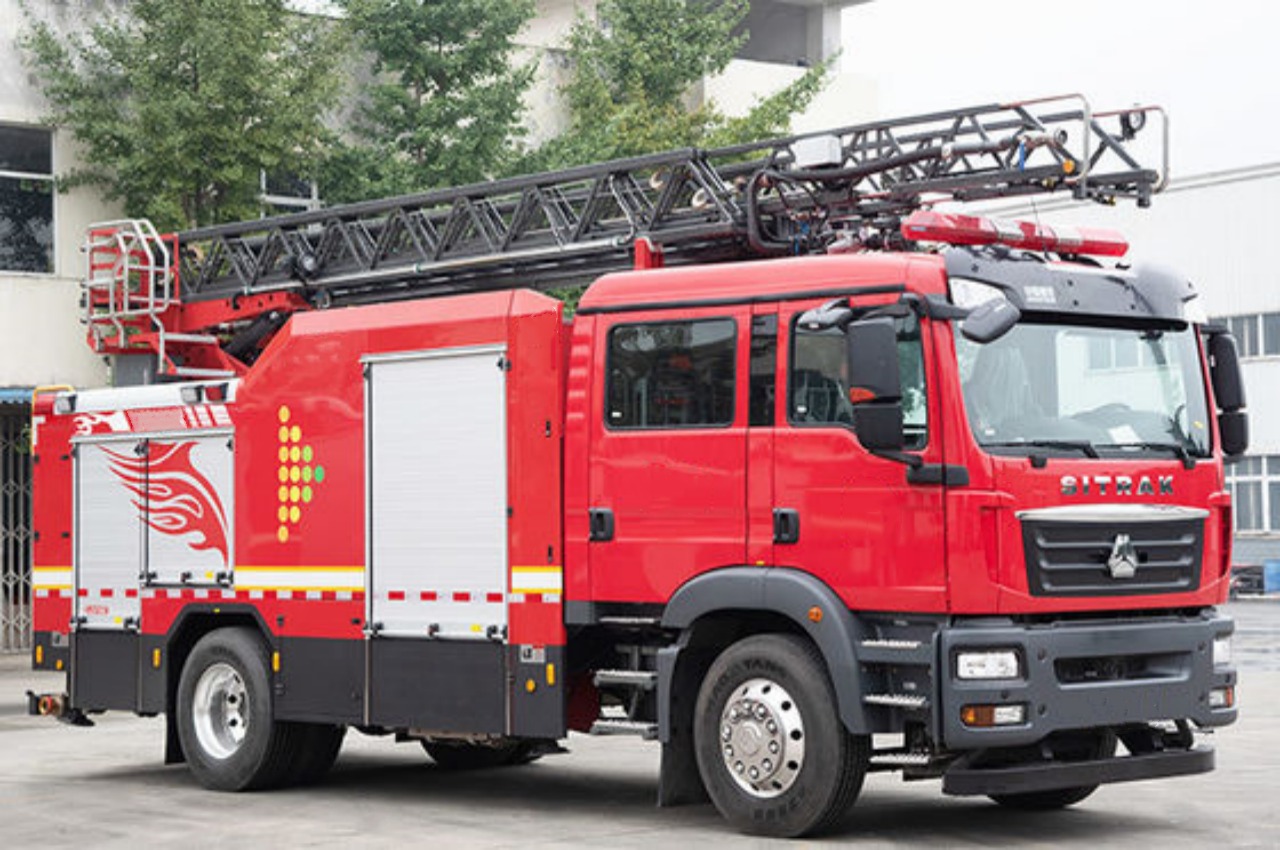
Types of Ladder Fire Trucks
1. Straight Aerial Ladder Truck
Also known as a “stick” ladder truck, this type of fire truck features a long, extendable ladder but lacks a bucket or platform at the end. Firefighters must climb the ladder to perform rescues or operate hoses. These trucks are commonly used in urban firefighting where access to tall buildings is required.
2. Tower Ladder Truck
A tower ladder truck, also called a platform ladder truck, has a bucket or platform at the tip of the ladder. This allows firefighters to safely stand in the bucket while directing water streams, conducting rescues, or breaking windows for ventilation. These trucks provide enhanced safety and versatility compared to straight aerial ladders.
3. Tiller Truck (Tractor-Drawn Aerial Truck)
A tiller truck features a long, articulated design with a separate cab for a tiller operator who steers the rear section of the truck. This design provides superior maneuverability, making it ideal for navigating tight urban streets while still offering an extendable ladder for elevated firefighting and rescues.
4. Quint Fire Truck
A quint (short for “quintuple”) fire truck combines 5 functions into 1 vehicle: an aerial ladder, a pump, a water tank, hose storage, and ground ladders. This makes it a versatile option for fire departments that require both ladder and pumper capabilities in a single truck.
Uses of a Ladder Fire Truck
1. High-Rise Firefighting
Ladder trucks are indispensable for fighting fires in multi-story buildings. Firefighters use the ladder to gain access to upper floors, ventilate smoke from windows, and position water streams at elevated locations where ground-based hoses cannot reach.
2. Search and Rescue Operations
During emergencies, people may become trapped on the upper floors of burning buildings. Ladder fire trucks allow firefighters to perform rescues by reaching windows or rooftops and safely extracting individuals in distress.
3. Aerial Water Application
When battling large fires, such as warehouse or industrial fires, aerial ladders allow firefighters to apply water or foam from above, improving coverage and efficiency in fire suppression efforts.
4. Ventilation Assistance
Firefighters often use ladder trucks to break windows and create ventilation points in burning buildings, helping to release smoke and heat. This tactic can slow fire spread and improve conditions for those inside the structure.
5. Specialized Rescue Operations
Beyond fire-related incidents, ladder trucks are used in various rescue situations, including rescuing people stranded on high structures (e.g., cranes, bridges) or assisting with emergency evacuations in disaster scenarios.
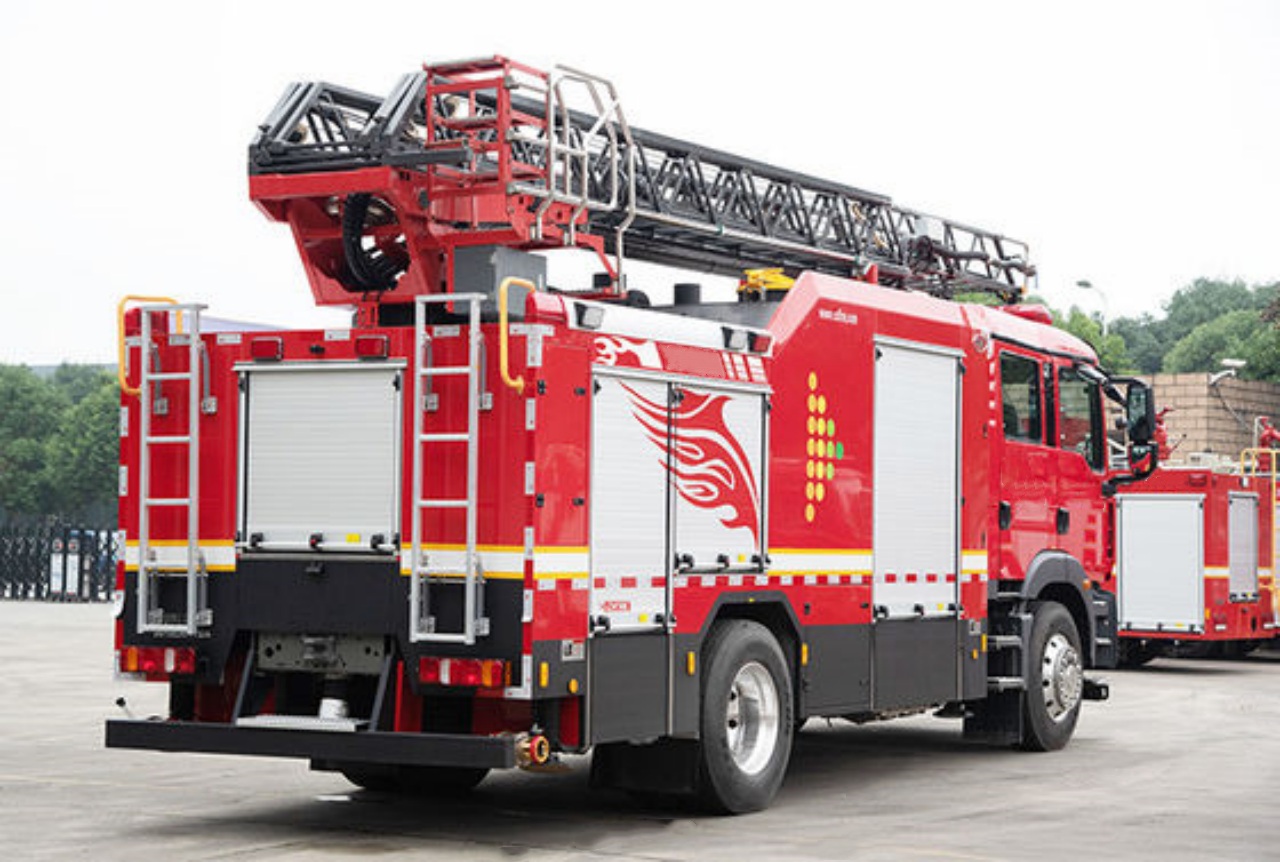
Ladder Fire Truck Operation and Crew Roles
Operating a ladder fire truck requires a well-trained crew with specialized skills. The typical crew roles include:
- Driver/Engineer: Responsible for driving the truck to the emergency scene and operating the stabilizers, water pumps, and aerial ladder system.
- Ladder Operator: Controls the ladder’s movements, ensuring it is positioned safely and effectively.
- Firefighters: Carry out rescue and fire suppression duties, using the ladder to access upper floors, ventilate buildings, or operate water streams.
- Incident Commander: Oversees the entire firefighting operation and coordinates with other emergency response units.
Maintenance and Safety Considerations
To ensure optimal performance and safety, ladder fire trucks undergo rigorous maintenance and inspection protocols. Key considerations include:
- Regular Ladder Inspections: The aerial ladder must be checked for mechanical wear, hydraulic leaks, and structural integrity.
- Pump and Hose System Testing: Ensuring that water delivery systems function properly for effective firefighting.
- Stabilizer Checks: Verifying that outriggers deploy correctly to prevent tipping hazards.
- Electrical and Lighting System Maintenance: Keeping emergency lights, sirens, and communication systems operational.
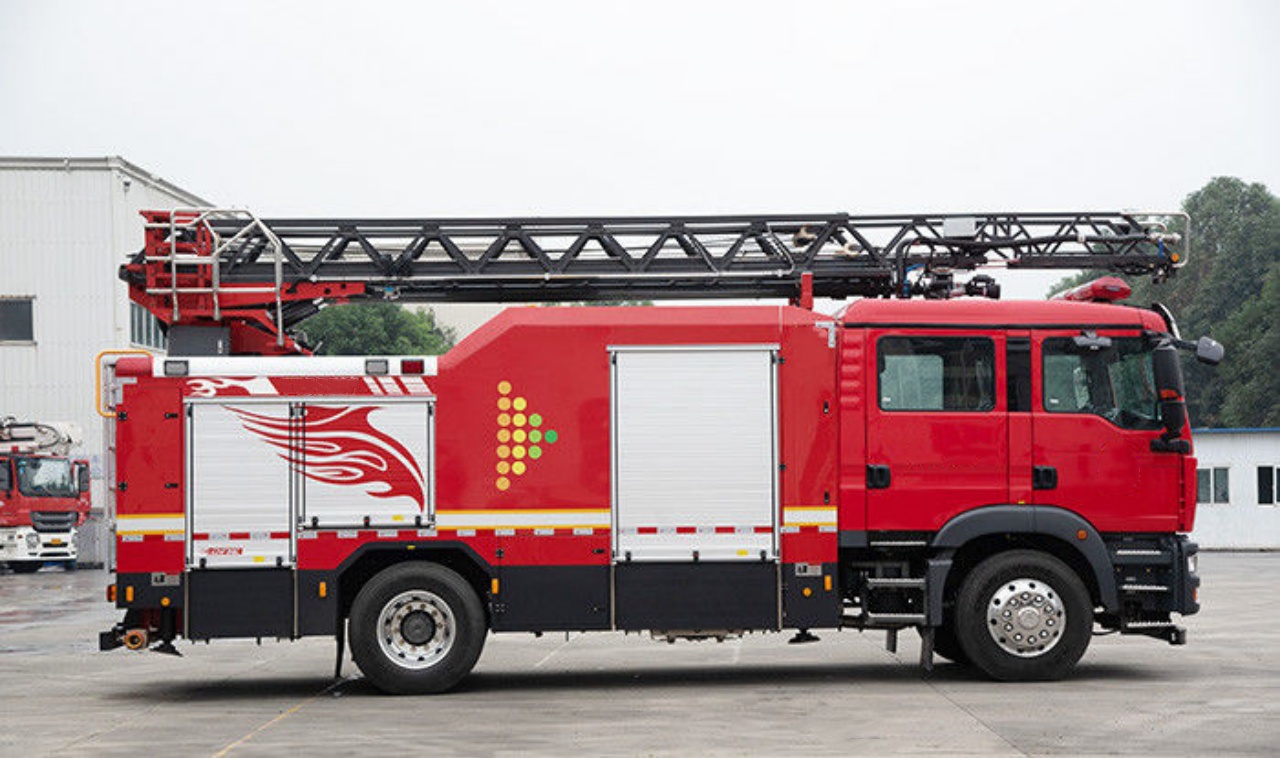
Conclusion
Ladder fire trucks are a vital part of modern firefighting operations, providing critical capabilities for fire suppression, rescues, and emergency response. Their extendable ladders, advanced water delivery systems, and rescue equipment make them indispensable in tackling fires in high-rise buildings and complex emergencies. With various types of ladder trucks available, fire departments can select the most suitable model based on their specific needs and urban or rural firefighting requirements. The continuous advancements in fire truck technology ensure that ladder trucks remain at the forefront of firefighting efforts, enhancing safety and efficiency in life-saving operations.
